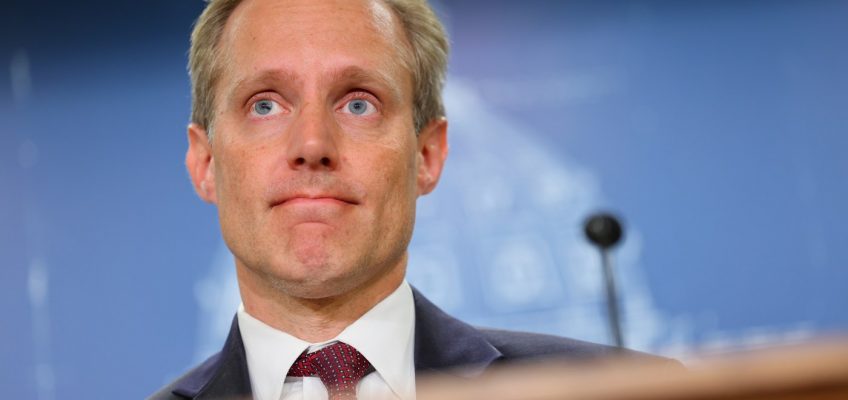On a Wednesday in September, just hours before he would be officially introduced as a member of the U.S. Hockey Hall of Fame’s class of 2025, Zach Parise was on a Twin Cities golf course, playing a round alongside two other American hockey legends, Mike Modano and Jamie Langenbrunner.
Parise, who will be officially inducted into the USHHF on Wednesday night in St. Paul, said it was a surreal feeling to hear his name mentioned alongside players who were his heroes as a youth hockey player in Bloomington in the 1990s.
“We all loved the (North) Stars, and I was always a big Mike Modano guy, a big Neal Broten guy. These are the players I looked up to,” said Parise, 41, who retired in 2024 after more than 1,300 NHL games. “I wore number nine growing up. … So, to be side-by-side with those guys is special.”
Parise will be inducted into the Eveleth-based hall alongside renowned hockey photographer Bruce Bennett, long-time NHL player Scott Gomez, women’s hockey legend Tara Mounsey and former Wisconsin and NHL star Joe Pavelski.
The son of renowned Minnesota North Stars forward J.P. Parise, Zach was raised in Bloomington and learned the game from the player who was his first hockey hero.
“I was lucky to be coached by my dad up through bantams and just learned so much from him about work ethic and what it takes to make it,” Parise said of his father, who died of cancer in early 2015 while Zach was playing for the Minnesota Wild.
After prep school at Shattuck-St. Mary’s, Zach played two seasons of college hockey at North Dakota and was one of three finalists for the Hobey Baker Award in 2004 after his sophomore year. Earlier that season, Parise was a key player on Team USA’s first gold medal-winning World Juniors team.
With that tournament in the Twin Cities later this month, Parise reflected on how the event has evolved, and what that first world title meant to American hockey.
“It’s amazing how that’s grown just in publicity in the United States, which is great for us, because you’re looking at the future stars of the NHL, the next wave,” Parise said. “It’s a little bit of a feather in the cap for us that we were able to be the first United States team to win it. You look at where it’s come now, you feel like every year, they’re the favorite or they’re winning it.”
After beginning his NHL career in New Jersey and helping the Devils reach the 2012 Stanley Cup Final, Parise came home via a 13-year contract worth $98 million that he signed with the Wild a few weeks later. Although his homecoming did not result in a deep playoff run, and Parise’s contract was bought out by the team in 2021, Wild owner Craig Leipold said the organization has zero regrets about the signing.
Parise was the top forward on the last two Wild teams to win first-round playoff series in 2014 and 2015.
“His name is hockey in this state. There couldn’t be a better person or a more deserving person, and we will be there to celebrate with him,” Leipold said. “He changed our franchise. People still ask, ‘Would you do it again?’ The answer is absolutely. It changed our business.”
In retirement, Parise lives in Edina with his family and spends countless hours at the rink.
“I am head coach of my daughter’s U12 team, I’m an assistant coach with my son’s peewee team and I’m helping out with my littlest son’s mite team. I am a full-time hockey dad and coach,” he said. “I joke with my kids that, ‘I’m not good at a lot of things, but I’m good at this, so sometimes, can you listen?’ It’s rewarding to see the excitement on the kids’ faces, and them learning things. I love it. It’s so much fun.”
He added that the biggest challenge this week has been putting together his acceptance speech, looking back on his career and all of the teammates and others who meant so much to him along the way.
Founded in 1973, the U.S. Hockey Hall of Fame has inducted more than 175 individuals and four teams in the past 52 years.
Related Articles
Wild survive slugfest in Seattle
Good memories for Freddy Gaudreau as he faces Wild
Tom Hicks, the Texas businessman who owned Stars, Rangers and Liverpool teams, dies at 79
Jesper Wallstedt looks human as Wild drop consecutive games for first time since October
John Hynes likes Vladimir Tarasenko’s game, wants to see more shots




